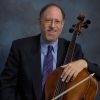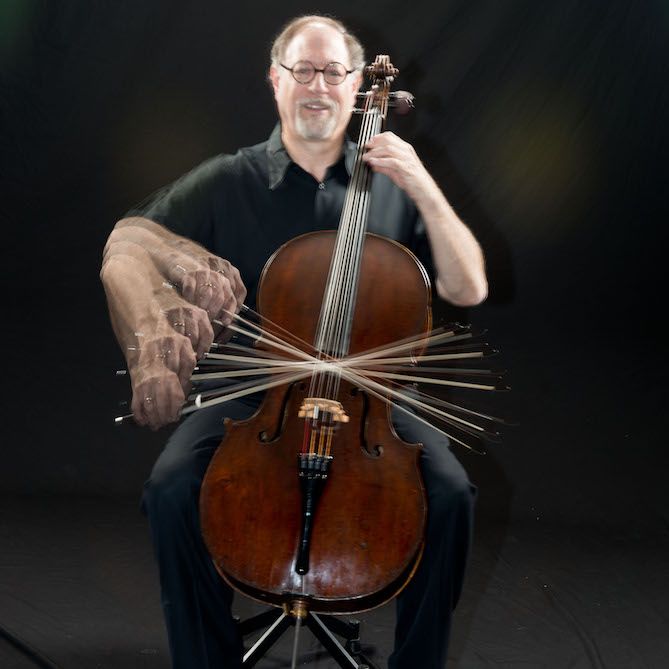
The Joy of Feuillard – A Sequential Approach to Teaching Bow Technique (Part 34 – Feuillard No. 36 – Variations #39-42)
Robert Jesselson
This will be the final Blog in this series on using the Feuilliard “Daily Exercises” to teach bow technique.
Variations #39 and #40:
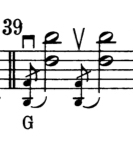
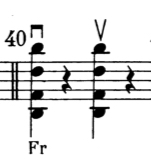
Variations #39 and #40 address chords over four strings. For #39 we have to use the full bow with the bottom two notes as grace notes. That means that they are played before the beat, with the top two notes on the beat. If playing with a piano, the pianist would probably play on the downbeat with the top of the chords. The string crossing is not too difficult at the frog, but playing the grace notes at the tip and then getting the main notes to sound strong is harder at the tip.
I addressed two other important issues with George in this video: the contact point (higher for the low strings and lower for the high strings), and the number of arm levels (two double stop arm levels).
We also tried two different ways of starting the double-stop grace notes on the low strings. First George played them from the string. Then I suggested trying it from above the string, by “plastering” the bow at the tip. In doing so we get two different kinds of attacks.
Variation #41:
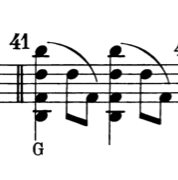
This is a tricky variation. It requires doing the chords, as in the previous variations, but after playing the top double-stop one has to leave the D-string note briefly in order to re-articulate it on the way down.
Variation #42:
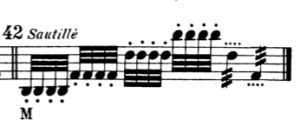
This is the very last Variation in the Feuillard bowing series. It returns to the sautillé stroke that we have seen throughout the variations, but requires coordinating the very fast stroke with quick string crossings. It is important to use two different parts of the arm for the two different motions: the upper arm for the string crossings and the wrist for the sautillé . The last time that Feuillard presented the sautillé stroke was in Theme No. 33 (Variations #31 and #32). So, he was expecting the student to let the sautillé percolate over time so that it becomes “easy” and comfortable to do along with the fast string crossings. George nailed it here in this video, and I asked him to try it a bit faster than he had practiced, which was successful.
As I mentioned in the video, the next step for the students would be the Sevcik 40 Variations, Op. 3 which involve various virtuosic bow techniques based on the fundamentals that we have worked on in the Feuillard.
I would like to take this opportunity to thank George and all the other students who agreed to be videoed in these blogs (Caroline, Iestyn, Tristan, and Zach). Each of them has made great progress through the process of studying the Feuillard (which they would have done with me anyway!) and by doing the video-taping for these blogs.
I would also like to thank CelloBello for providing a forum for these blogs. My special thanks to Paul Katz, my teacher and mentor, for his help and support over the years. And thanks to the CelloBello staff – and especially Jamie Clark, who was a joy to work with.
I hope that you have enjoyed this series, and that you have benefited from it. If you would like to contact me, please do so at RJesselson@Mozart.sc.edu
Subjects: Repertoire, Technique
